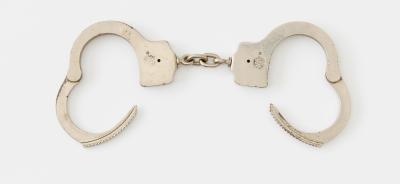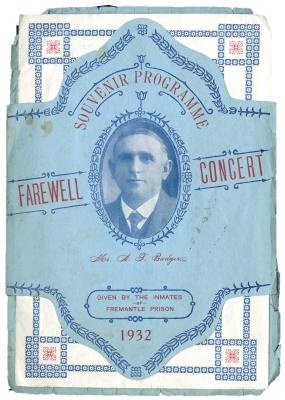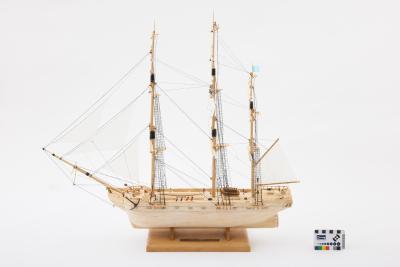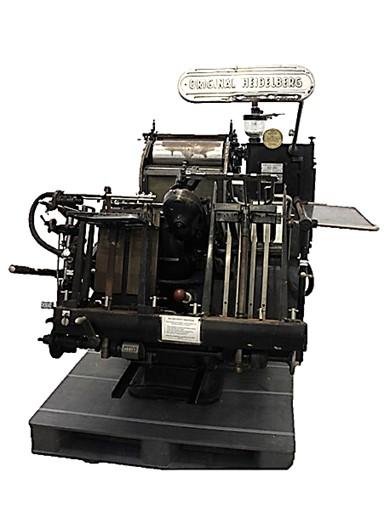HEIDELBERG PLATEN LETTERPRESS PRINTING MACHINE
1971 - 1991Very large, heavy, black metal, Heidelberg printing press. Sitting on large, thick, metal feet, the press is a complex series of metal mechanical components, coming together in roughly a rectangular shape. A small, protruding, flat metal plate is attached to the side. Sitting above the machine, is a long, rectangular, silver metal sign with rounded ends. Raised onto the surface is, 'ORIGINAL HEIDELBERG'.
Made in Germany in c1960, this mechanical printing press was purchased by Fremantle Prison in c1971 and used in the Print Shop until the Prison closure in 1991. It was then transferred to Casuarina Prison where it was used until 2015. The Heidelberg Patten Letterpress used lead letters, and was used until the Prison purchased a Macintosh brand printer in 1989.
Details
Details
'ORIGINAL HEIDELBERG'
This press was made in c1960 and is a marvel of German engineering. The history of the manufacturer goes back to 1850 and this type of press, the 'Original Heidelberg', made its debut in 1913. Described as a 'workhorse', the Heidelberg Platen is a widely used, fast working machine able to print large quantities of paper up to A4 size.
Printing operations were part of the Convict Establishment's original infrastructure, when in 1854 convicts were instructed in the use of two printing presses, which were housed in the temporary accommodation of Scott's Warehouse. By 1857 the printing presses had been moved to the Prison site, and printing operations soon became so successful that the Establishment functioned as the official Government Printer for Western Australia from 1858 until around 1870. This status was rewarded to Fremantle Prison again from 1950, and prisoners were printing gazettes, forms, books, letterheads and official documents for the WA government.
Around 1960 the Prison's printing operations were moved into one of the West Workshops on the Fremantle Prison site, and was renamed the Print Shop. This dedicated workshop was built between 1900 and 1901, and was the outcome of the 1898-99 Royal Commission, which recommended that more workshops be established at Fremantle Prison.
Many internal documents were printed in the Prison's Print Shop, including the successive internal newsletters published during the twentieth century, such as The Newsletter, The Jarrah Post, and Ad Rem. The August 1961 edition of The Jarrah Post records the Print Shop’s output for the 1960-61 financial year as including 196,000 ruled pages, 2,900 mixed cards, 4,000 butter wraps, 400 copies of The Stepping Stone, and 1500 copies of The Jarrah Post. Also produced were address labels, ‘gummed labels’, envelopes, brown paper bags and correspondence pads.
On the 22 of January 1979, there were recorded to be 17 prisoners working in the Prison’s Print Shop. During the 1980s the daily average was 25 prisoners in the Print Shop at one time, however, at times of high workloads there could be up to 40. The workshop was kept efficient by dividing the work structure into small, manageable tasks. New prisoners would be placed at the ‘bag table’, which was a bench for folding paper bags. They would remain here for a minimum of one week, after which those prisoners who proved co-operative, efficient and hardworking were allowed to stay in the Print Shop.
By the 1970s the Print Shop’s equipment had become very outdated and inefficient, so in c1971 this Heidelberg Platen Letterpress printing machine was purchased. This Press, regarded by pressmen as “The Prince of Presses,” was made in West Germany by Schnellpressenfabrik AG Heidelberg in the 1960s. The Heidelberg Press features heavy-duty construction with massive base and platen of specially cast alloy and shaft of steel, and used lead letters of type to print.
Until its closure in 1991, Fremantle Prison was the only prison in Western Australia with its own printing operation. The Heidelberg Printing Press was still in use when the Prison closed, and was then taken to Casuarina Prison, where it was used onsite before being decommissioned in 2015 and donated to the Fremantle Prison Collection.










